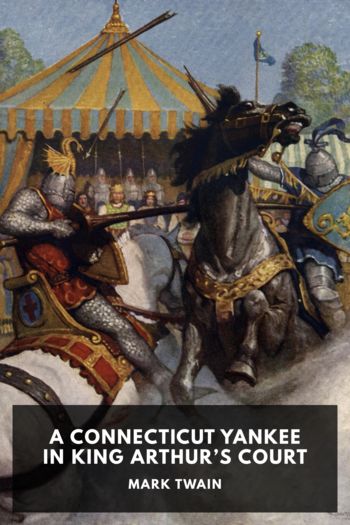A Connecticut Yankee in King Arthur’s Court by Mark Twain (my reading book .TXT) 📕

Description
A Connecticut Yankee in King Arthur’s Court is one of Mark Twain’s most enduring novels. During a stay at a modern-day English castle, the narrator meets a mysterious stranger. The stranger, Hank Morgan, is an engineer from Connecticut, and proceeds to weave a satirical, biting, and hilarious tale of how he traveled back in time to find himself in the court of the legendary King Arthur. There he uses his modern-day knowledge to convince the locals that he’s a powerful magician. As the book progresses, Hank modernizes—and Americanizes—the lives of the locals.
Twain’s talent for humor and satire are on full display in Yankee, and he doesn’t waste the opportunity to use Hank as a mouthpiece for his views on things like politics, capitalism, and justice. Many consider it to be his best work.
Read free book «A Connecticut Yankee in King Arthur’s Court by Mark Twain (my reading book .TXT) 📕» - read online or download for free at americanlibrarybooks.com
- Author: Mark Twain
Read book online «A Connecticut Yankee in King Arthur’s Court by Mark Twain (my reading book .TXT) 📕». Author - Mark Twain
But for me, he never would have got out. Morgan le Fay hated him with her whole heart, and she never would have softened toward him. And yet his crime was committed more in thoughtlessness than deliberate depravity. He had said she had red hair. Well, she had; but that was no way to speak of it. When redheaded people are above a certain social grade their hair is auburn.
Consider it: among these forty-seven captives there were five whose names, offenses, and dates of incarceration were no longer known! One woman and four men—all bent, and wrinkled, and mind-extinguished patriarchs. They themselves had long ago forgotten these details; at any rate they had mere vague theories about them, nothing definite and nothing that they repeated twice in the same way. The succession of priests whose office it had been to pray daily with the captives and remind them that God had put them there, for some wise purpose or other, and teach them that patience, humbleness, and submission to oppression was what He loved to see in parties of a subordinate rank, had traditions about these poor old human ruins, but nothing more. These traditions went but little way, for they concerned the length of the incarceration only, and not the names of the offenses. And even by the help of tradition the only thing that could be proven was that none of the five had seen daylight for thirty-five years: how much longer this privation has lasted was not guessable. The king and the queen knew nothing about these poor creatures, except that they were heirlooms, assets inherited, along with the throne, from the former firm. Nothing of their history had been transmitted with their persons, and so the inheriting owners had considered them of no value, and had felt no interest in them. I said to the queen:
“Then why in the world didn’t you set them free?”
The question was a puzzler. She didn’t know why she hadn’t, the thing had never come up in her mind. So here she was, forecasting the veritable history of future prisoners of the Castle d’If, without knowing it. It seemed plain to me now, that with her training, those inherited prisoners were merely property—nothing more, nothing less. Well, when we inherit property, it does not occur to us to throw it away, even when we do not value it.
When I brought my procession of human bats up into the open world and the glare of the afternoon sun—previously blindfolding them, in charity for eyes so long untortured by light—they were a spectacle to look at. Skeletons, scarecrows, goblins, pathetic frights, every one; legitimatest possible children of Monarchy by the Grace of God and the Established Church. I muttered absently:
“I wish I could photograph them!”
You have seen that kind of people who will never let on that they don’t know the meaning of a new big word. The more ignorant they are, the more pitifully certain they are to pretend you haven’t shot over their heads. The queen was just one of that sort, and was always making the stupidest blunders by reason of it. She hesitated a moment; then her face brightened up with sudden comprehension, and she said she would do it for me.
I thought to myself: She? why what can she know about photography? But it was a poor time to be thinking. When I looked around, she was moving on the procession with an axe!
Well, she certainly was a curious one, was Morgan le Fay. I have seen a good many kinds of women in my time, but she laid over them





Comments (0)